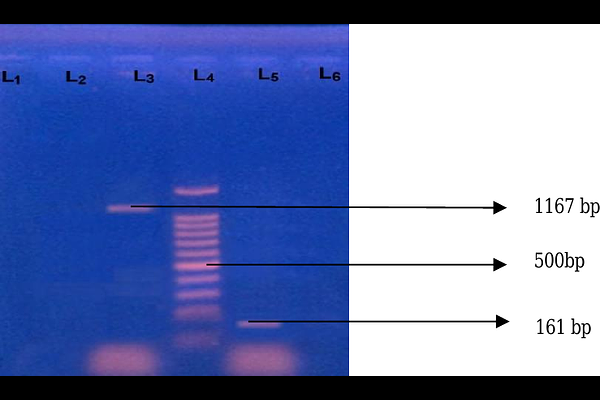Antibiotic Resistance pattern in Bile from Cholecystectomised Patients by Multiplex PCR

Antibiotic Resistance pattern in Bile from Cholecystectomised Patients by Multiplex PCR
Farhana, N.; Uddin Khan, M. A.; Shamsuzzaman, S. M.
AbstractBackground: Bile in the biliary tract is normally sterile. Presence of gallstones, ascending infection from duodenum or bacterial translocation from portal vein leads to microfloral colonization in biliary system. Aim: This study was aimed to evaluate the microbiological profile of bile from gall bladder for determination of the appropriate antibiotics in cholecystectomised patients. Methods: This cross sectional study included patients who underwent laparoscopic or open cholecystectomy in Dhaka Medical College Hospital, Dhaka, from July, 2013 to December, 2014. Total 246 intraoperative bile were cultured aerobically in Blood agar and MacConkeys agar media. The identified isolates were tested for their sensitivity pattern according to CLSI guidelines and multiplex PCR was used to detect virulence genes of Salmonella Typhi and anaerobic bacteria along with drug resistance genes. Findings: Out of 246 bile samples, organisms were identified in 171 (69.51%) cases; 119 (48.37%) were aerobic bacteria identified by culture and PCR and 52 (21.14%) were anaerobic bacteria identified by multiplex PCR. Escherichia coli (26.61%) were found predominantly followed by Staphylococcus aureus (19.35%), Clostridium perfringens (13.82%). Salmonella enterica serovar Typhi was detected by culture and PCR in 3 (1.22%) and 8 (3.45%) samples respectively. Prevalence of ESBLs, Carbapenemase producers and MRSA were detected phenotypically in 10.96%, 16.44% and 8.33% samples respectively and the resistance genes blaCTX-M-15 (50.0%), blaOXA-1-group (25.0%), blaNDM-1 (62.50%), OXA-181/OXA-84 (12.5%) and mecA (8.33%) were detected. Conclusion: Significant proportion of aerobic and anaerobic bacterial infection associated with biliary tract obstruction may warrants serious health risk to cholecystectomised patients in this region.